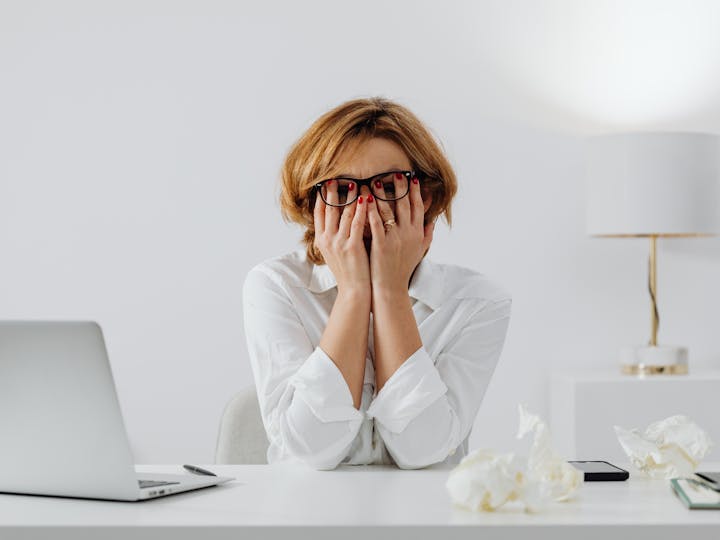Work-related stress isn’t just a problem at the office. It follows people home, affecting rest, family life, and even financial stability. Beauty and Bodywork Insurance recently released its report, Top U.S. Jobs That Could Use a Massage, identifying the professions under the greatest physical and mental strain in 2025.
The results serve as a reminder that while stress may be tied to the workplace, recovery often happens at home.
The Jobs Under the Most Strain
The Beauty and Bodywork Insurance report highlights the professions carrying the heaviest stress loads. Here are the top three from each category, with a quick look at why they rank so high.
Physically Stressful Jobs
1. Firefighters
Firefighters carry heavy gear, work in extreme heat, and face life-threatening conditions, making their jobs physically grueling. Repetitive lifting and awkward movements often lead to long-term injuries.
2. Flight Attendants
They spend hours on their feet, lifting luggage and pushing heavy carts, often while navigating turbulence. Irregular schedules and jet lag add to their physical exhaustion.
3. Laborers & Material Movers
Constant lifting, bending, and hauling in fast-paced environments makes this job tough on the body. Repetitive strain and poor ergonomics contribute to chronic pain.
Mentally Stressful Jobs
1. Flight Attendants
Beyond physical strain, they manage safety, de-escalate conflicts, and reassure passengers during emergencies. The emotional labor of balancing service with safety makes their work highly stressful.
2. Small Engine Mechanics
These workers must deliver precision under tight deadlines, where mistakes can have serious consequences. The pressure to “get it right” makes the role mentally exhausting.
3. Physician Assistants
PAs juggle patient care, long hours, and constant decision-making in high-stress medical settings. The emotional toll of healthcare adds to already demanding workloads.
Stress Relief Doesn’t Stop at Work
Massage therapy is one proven way to combat stress, helping reduce cortisol, ease pain, and improve sleep. According to Medical News Today, even a 10-minute massage can measurably heighten relaxation and calmness by activating the body’s “rest and digest” system.
But massage is only one part of the solution. At-home practices like stretching, yoga, and simple strength exercises can also make a big difference. The Mayo Clinic notes that regular physical activity reduces stress hormones and stimulates endorphin production, boosting both physical and mental health.
Simple At-Home Routines for Stress Relief
Here are a few ways workers in demanding jobs can support their health at home:
- Stretch daily: Gentle stretching improves flexibility, relieves muscle tension, and reduces the risk of injury. Even 10 minutes after work can help undo hours of strain.
- Try yoga or tai chi: Both practices combine movement with breathing and mindfulness, proven to reduce anxiety and improve balance.
- Strengthen core muscles: Core stability reduces back pain, a common issue for laborers, mechanics, and anyone on their feet all day.
- Practice relaxation breathing: Deep breathing activates the body’s relaxation response, lowering heart rate and stress hormones.
- Use self-massage tools: Foam rollers or massage balls can be affordable ways to target sore muscles between professional treatments.
The Cleveland Clinic points out that exercise and stretching at home not only ease physical strain but also improve mood and resilience against stress.
Why Stress Management Matters for Long-Term Stability
Stress isn’t just uncomfortable, it has long-term consequences for health and finances. The American Institute of Stress estimates that workplace stress costs U.S. employers over $300 billion annually, but workers also feel the financial pinch when stress leads to missed workdays, medical bills, or early career changes due to burnout.
By investing in routines like massage, exercise, and stretching, workers can protect both their mental health and their long-term stability. A stronger body and calmer mind at home translate to fewer sick days, better job performance, and greater financial security over time.
Final Thoughts
Stress can linger long after the workday ends, affecting sleep, mood, and how present we feel at home. Small routines like stretching, yoga, breathing exercises, and occasional professional care can add up over time to reset the nervous system and preserve flexibility and focus.
If you want a quick snapshot of where workplace wellness is heading this year, the Global Wellness Institute’s 2025 workplace wellbeing trends offers a timely look at how leading employers are integrating recovery, mental health resources, and smarter home-to-work habits.



